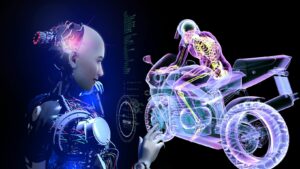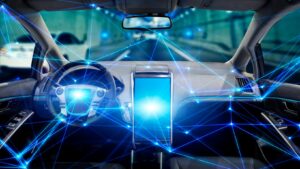In today’s fast-paced world, the automotive industry is undergoing a digital transformation that’s reshaping how vehicles are designed, manufactured, and maintained. Automotive digital solutions are at the forefront of this revolution, offering innovative tools that enhance efficiency, safety, and customer experience. From advanced driver-assistance systems to predictive maintenance powered by AI, these technologies are redefining the road ahead.
The impact of automotive digital solutions extends beyond the vehicles themselves, influencing the entire ecosystem, including supply chains, dealerships, and service centers. As the industry embraces this digital wave, it’s clear that the future of mobility is not just about getting from point A to B—it’s about creating a seamless, connected journey.
Automotive Digital Solutions

Automotive digital solutions leverage technology to optimize various aspects of the industry. These solutions incorporate data analytics, cloud computing, and the Internet of Things (IoT) to improve vehicle design and production processes. By utilizing AI-driven platforms, manufacturers can predict maintenance needs accurately, reducing downtime and improving vehicle lifespan.
Another critical area where automotive digital solutions excel is in customer experience enhancement. Advanced driver-assistance systems and smart infotainment options offer increased safety and entertainment features, catering to the growing consumer demand for connected vehicles. With digital transformation at its core, the automotive ecosystem, including supply chains and service centers, operates more efficiently.
Furthermore, automotive digital solutions assist companies in exploring new business models, such as subscription-based services and electric vehicle initiatives. These initiatives contribute to the goal of establishing a seamless and connected mobility environment across the automotive landscape.
Key Components of Automotive Digital Solutions

Automotive digital solutions incorporate several core elements essential for transforming the automotive sector. Data Analytics plays a fundamental role by processing vast datasets to optimize design, manufacturing, and service processes. These powerful analytics tools enable manufacturers to gain insights into customer preferences and operational efficiencies, ensuring vehicles meet market demands.
AI-driven Platforms are utilized to predict maintenance needs, enhancing reliability and providing a seamless user experience. These intelligent systems can identify potential issues before they manifest, improving safety and extending vehicle lifespan. IoT Integration connects vehicles to networks, allowing real-time data exchange, improving navigation and infotainment services for a richer driving experience.
Cloud Computing offers scalable and flexible infrastructure, supporting innovation and reducing costs. Automakers leverage cloud solutions to collaborate across global teams, accelerate development cycles, and streamline operations. These key components of automotive digital solutions collectively drive the advancement of connected, efficient, and sustainable vehicles.
Benefits of Automotive Digital Solutions

Automotive digital solutions enhance operational efficiency by automating processes. They’re streamlining everything from vehicle design to manufacturing with precision, reducing production time and costs. These solutions improve safety by integrating advanced driver-assistance systems that react faster than human reflexes. They enhance predictive maintenance with AI-driven analytics for optimizing performance and prolonging vehicle lifespan.
Customers gain personalized experiences through connected services, which adjust vehicle settings and track service history, enriching usability. Automotive digital solutions empower automakers to adapt swiftly to consumer demands, fostering innovation. They leverage data analytics, IoT, and cloud computing to enable real-time communication, supporting informed decision-making. Ultimately, automotive digital solutions drive sustainable practices by facilitating electric and autonomous vehicle development, ensuring a future-ready automotive industry aligned with growing environmental concerns.
Challenges in Implementing Automotive Digital Solutions
Despite the transformative potential of automotive digital solutions, several challenges persist in their implementation. Integrating new technologies into existing systems can be complex and costly, requiring significant investment in infrastructure and training. Additionally, ensuring data security and privacy remains a critical concern as vehicles become more connected. Automakers must navigate regulatory landscapes that vary across regions, often complicating the deployment of advanced features. Furthermore, the rapid pace of technological advancement necessitates continuous innovation and adaptation, which can strain resources. Addressing these challenges is essential for the industry to fully harness the benefits of digital transformation and maintain a competitive edge in a fast-evolving market.